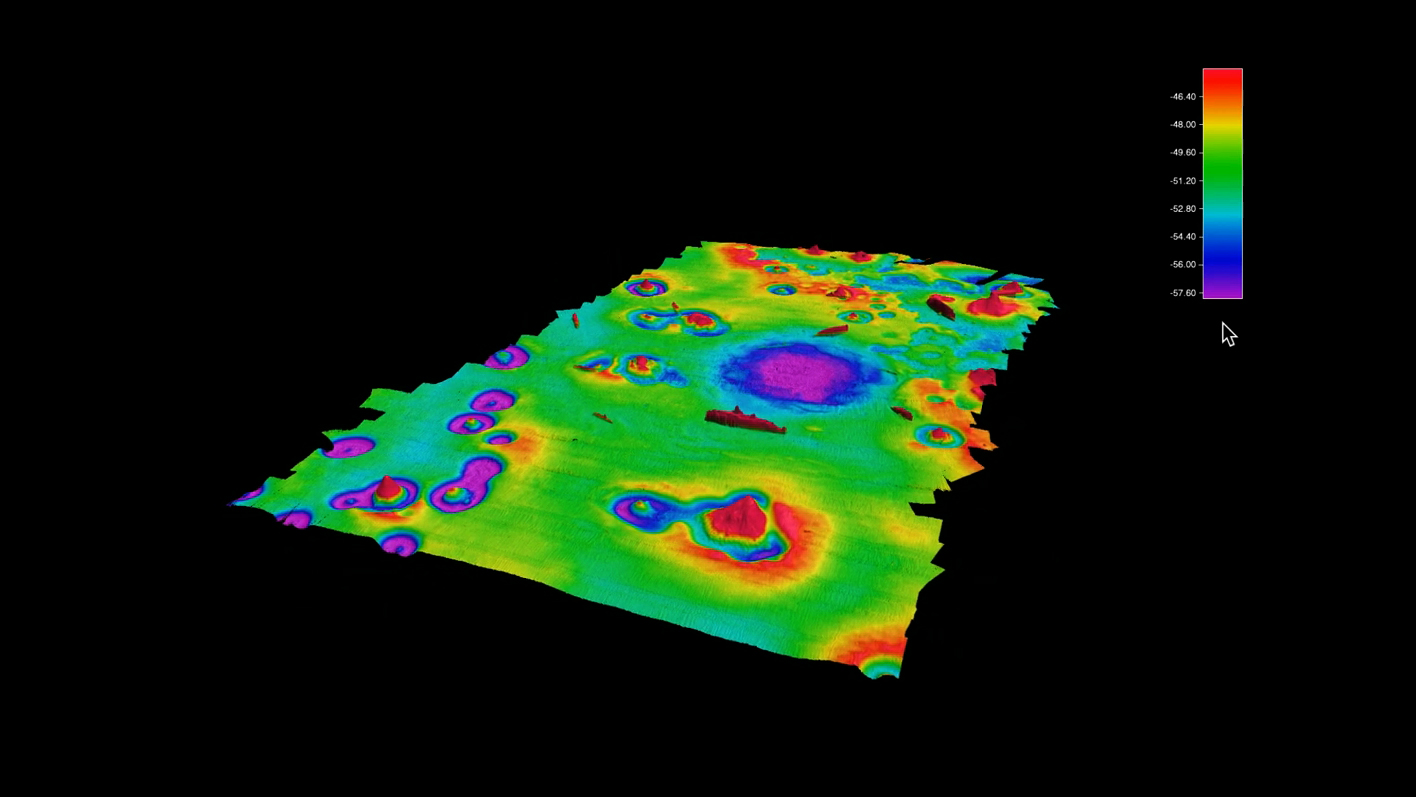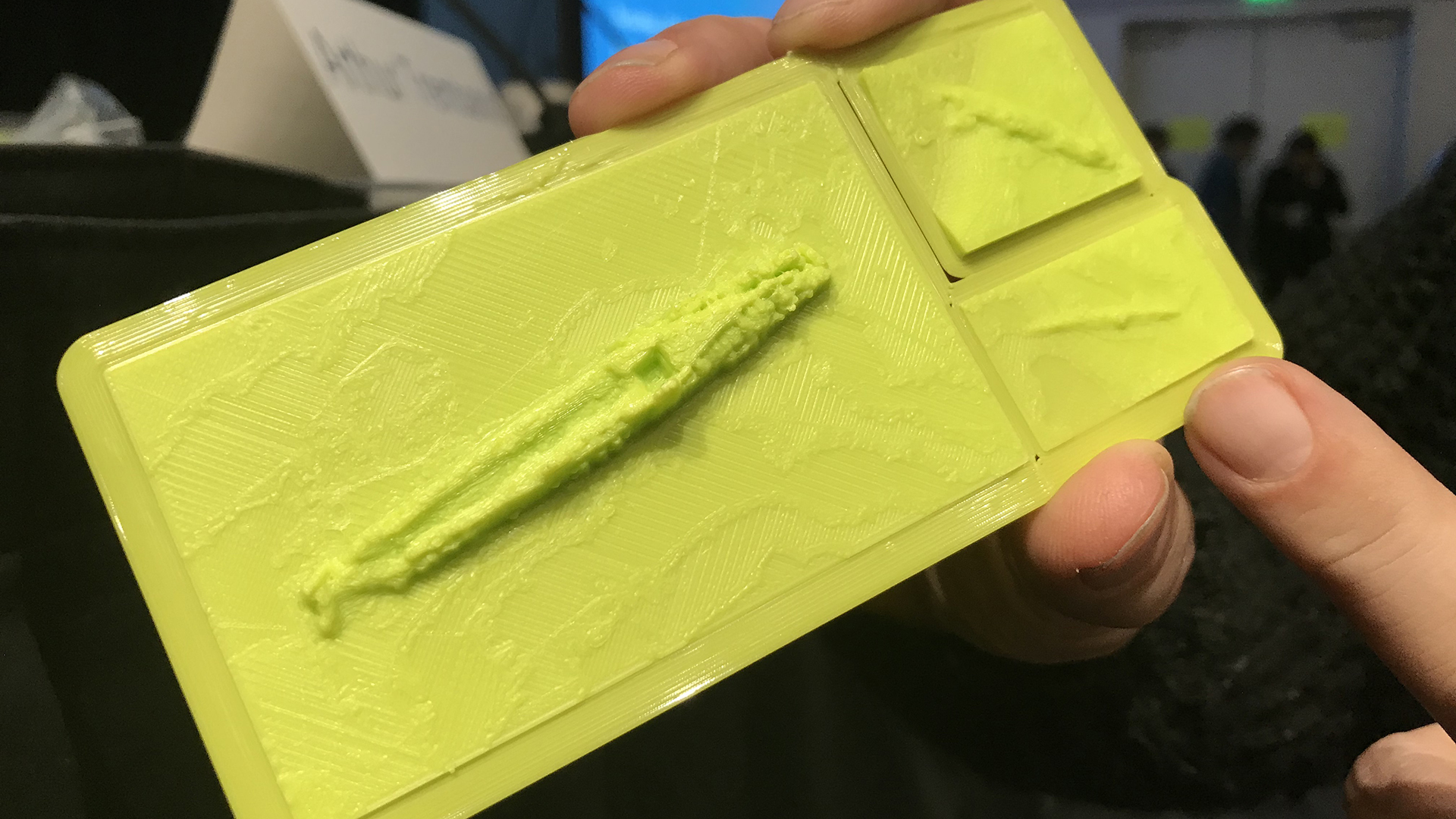Enormous Craters Blasted in Seafloor by Nuclear Bombs Mapped for the First Time
"It seemed as if Captain Marvel herself had punched the planet."

SAN FRANCISCO — Today, all seems quiet in the remote Bikini Atoll, a chain of coral reef islands in the central Pacific. But more than 70 years ago, this region's seafloor was rocked by powerful atomic bombs detonated by the U.S. Army.
For the first time, scientists have released remarkably detailed maps of this pockmarked seabed, revealing two truly massive craters. This new map shows that the seabed is still scarred by the 22 bombs detonated at Bikini Atoll between 1946 and 1958.
The map was presented yesterday (Dec. 9) at the annual meeting of the American Geophysical Union.
Related: One of the World’s Most Remote Islands Is Also the Most Polluted
During the 1946 nuclear weapons test known as "Operation Crossroads," the U.S. wanted to test the impact of nuclear bombs on warships. To that end, the Army assembled more than 240 ships — some of which were German and Japanese — that held different amounts of fuel and munitions, then deployed two nuclear weapons to destroy them, researcher Arthur Trembanis, an associate professor with the College of Earth, Ocean, and Environment at the University of Delaware, said in the presentation.
At the time of the tests, Trembanis said, comedian Bob Hope joked grimly:
"As soon as the war ended, we found the one spot on Earth that had been untouched by war and blew it to hell."
Sign up for the Live Science daily newsletter now
Get the world’s most fascinating discoveries delivered straight to your inbox.

One of these tests, known as "Baker," was the first to detonate an atomic bomb underwater, on July 5, 1946.
"The bomb went off in a microsecond," Trembanis said. "Within seconds more than 2 million tons of water, sand and pulverized coral shot in the air, in a column more than 900 feet [274 meters] wide and 1 mile [1.6 kilometers] high."
Though the National Parks Service surveyed Bikini during the late 1980s and early 1990s, the crater from the Baker blast wasn't visible, Trembanis said.
“We needed advanced sonar to be able to see this large feature," Trembanis said.
When he and his colleagues visited the site, they mapped an area about 1.5 times the size of Central Park in New York City, creating digital models at a resolution of 1 meter per pixel and representing more than 20 million data sounding points.
Seen at that resolution, the Baker crater was astonishing in its depth and breadth. Contrary to the scientists' expectations, time hadn't smoothed the crater's rough interior. Rather, the crater still showed distinct "ripples" — structures that radiated from the center of the bomb blast, "like if somebody dropped a very large pebble onto the sea bed," Trembanis said. "It seemed as if Captain Marvel herself had punched the planet and put a dent in it."
But as powerful as the early atomic tests were, they were dwarfed by the later blasts caused by hydrogen and fusion bomb tests in the 1950s. The researchers investigated a crater that was 184 feet (56 m) deep and had an unusual oblong shape; they determined that it was a composite crater from multiple blasts: "Castle Bravo," a 15-megaton bomb that was the largest ever detonated by the U.S., and "Castle Romeo," the first deployed thermonuclear bomb.
These tests left behind a uniquely devastating array of shipwrecks and craters, and the first detailed map of their aftermath will help scientists to tell this untold story and connect to "a moment at the dawn of the nuclear age," Trembanis said. "Our new findings provide insights into previously unknown conditions at Bikini and allow us to reflect on the lasting consequences from these and other tests."
- The 22 Weirdest Military Weapons
- Flying Saucers to Mind Control: 22 Declassified Military & CIA Secrets
- 10 of the Most Polluted Places on Earth
Originally published on Live Science.


Mindy Weisberger is an editor at Scholastic and a former Live Science channel editor and senior writer. She has reported on general science, covering climate change, paleontology, biology and space. Mindy studied film at Columbia University; prior to Live Science she produced, wrote and directed media for the American Museum of Natural History in New York City. Her videos about dinosaurs, astrophysics, biodiversity and evolution appear in museums and science centers worldwide, earning awards such as the CINE Golden Eagle and the Communicator Award of Excellence. Her writing has also appeared in Scientific American, The Washington Post and How It Works Magazine. Her book "Rise of the Zombie Bugs: The Surprising Science of Parasitic Mind Control" will be published in spring 2025 by Johns Hopkins University Press.









